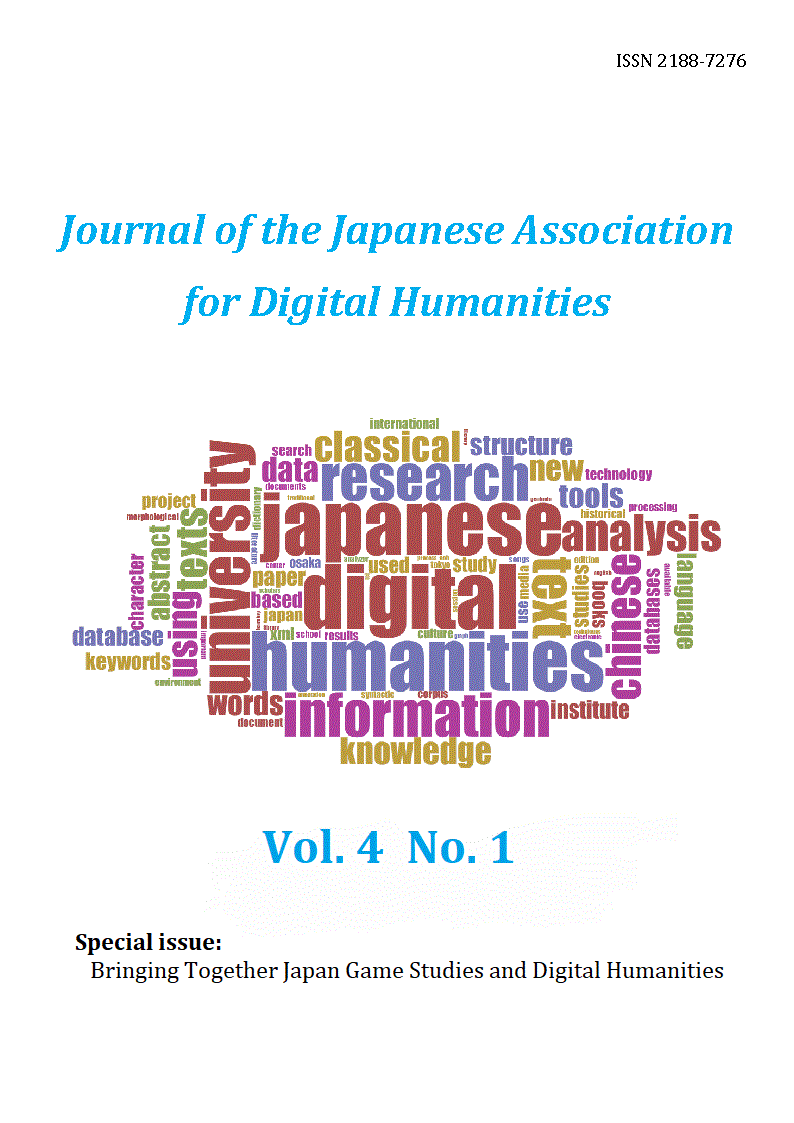4 巻, 1 号
Special issue: Bringing Together Japan Game Studies and Digital Humanities
選択された号の論文の6件中1~6を表示しています
- |<
- <
- 1
- >
- >|
Special issue: Bringing Japan Game Studies and Digital Humanities
-
2019 年 4 巻 1 号 p. 1-4
発行日: 2019/08/30
公開日: 2019/08/29
PDF形式でダウンロード (155K) -
2019 年 4 巻 1 号 p. 5-6
発行日: 2019/08/30
公開日: 2019/08/29
PDF形式でダウンロード (153K) -
2019 年 4 巻 1 号 p. 7-36
発行日: 2019/08/30
公開日: 2019/08/29
PDF形式でダウンロード (1490K) -
2019 年 4 巻 1 号 p. 37-53
発行日: 2019/08/30
公開日: 2019/08/29
PDF形式でダウンロード (379K) -
2019 年 4 巻 1 号 p. 54-71
発行日: 2019/08/30
公開日: 2019/08/29
PDF形式でダウンロード (346K) -
2019 年 4 巻 1 号 p. 72-89
発行日: 2019/08/30
公開日: 2019/08/29
PDF形式でダウンロード (1120K)
- |<
- <
- 1
- >
- >|
